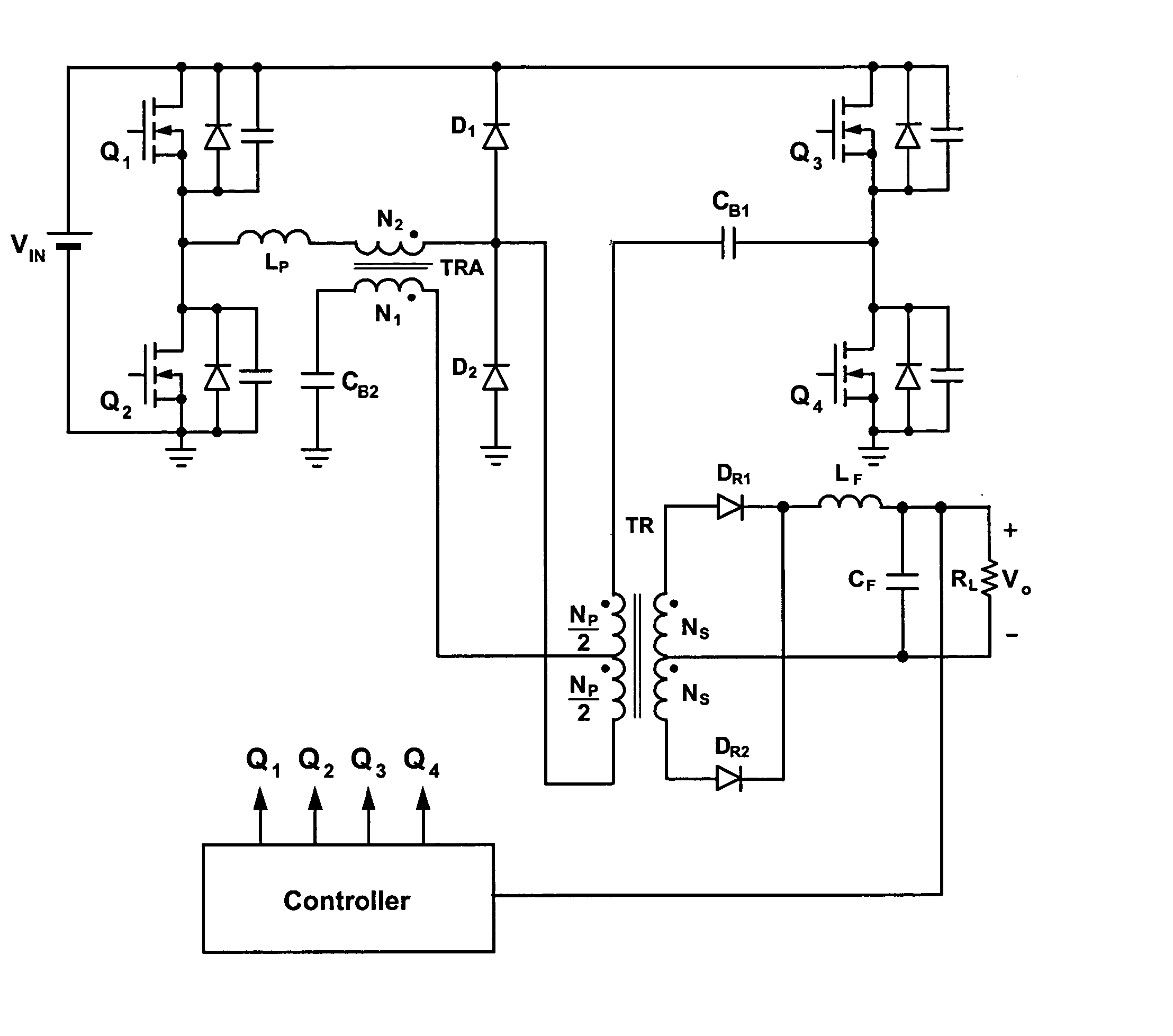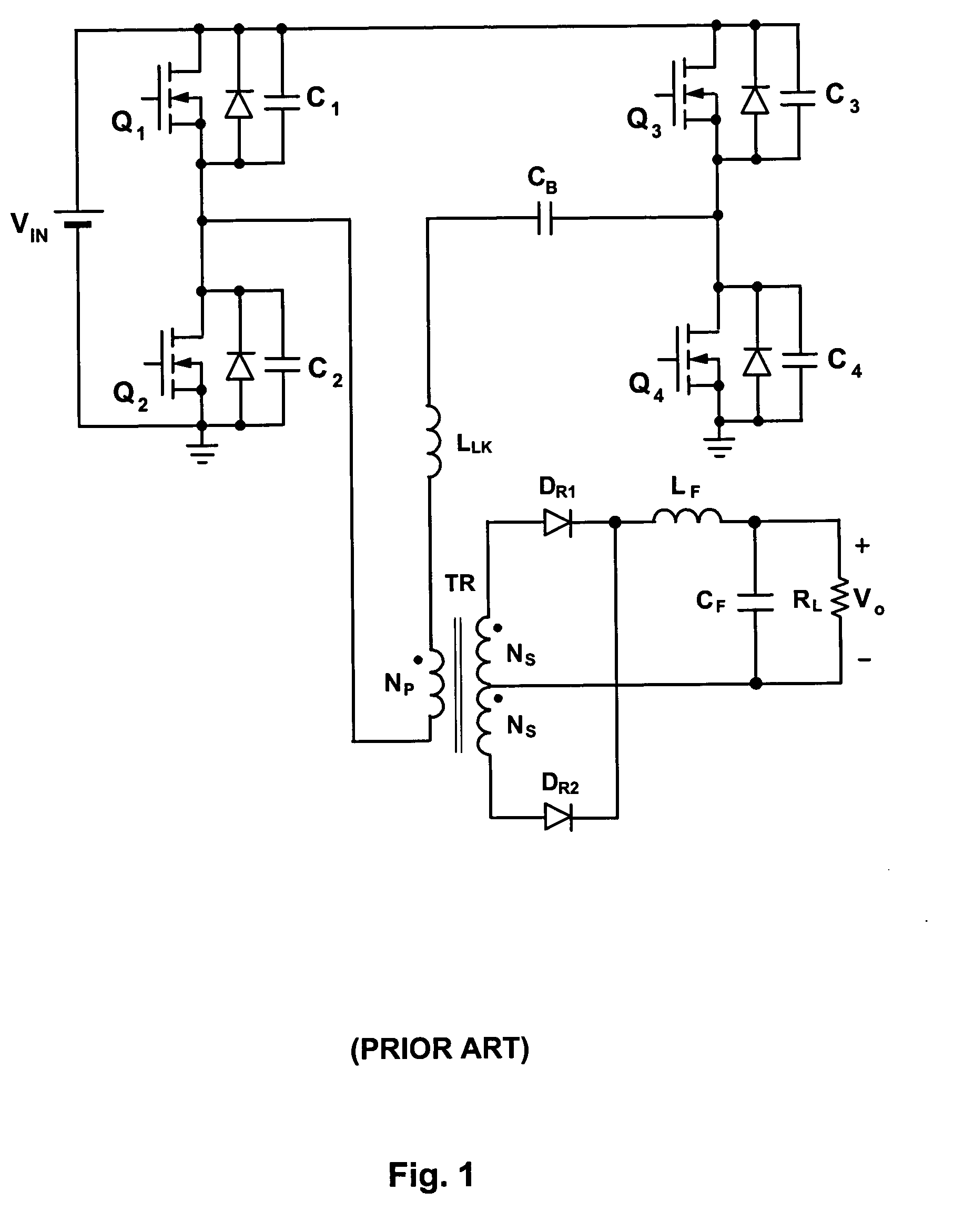Full bridge power converters with zero-voltage switching
a converter and bridge technology, applied in the direction of electric variable regulation, process and machine control, instruments, etc., can solve the problems of conduction loss and switching loss, conduction loss, switching loss is associated,
- Summary
- Abstract
- Description
- Claims
- Application Information
AI Technical Summary
Benefits of technology
Problems solved by technology
Method used
Image
Examples
Embodiment Construction
FIG. 4 shows an exemplary embodiment for a converter in accordance with the present invention. The converter in FIG. 4 is a full bridge converter having an input port for receiving input power source VIN and an output port for supplying output power to load RL. The converter employs power transformer TR, auxiliary transformer TRA, and a bridge comprising leading-leg primary switches Q1 and Q2 and lagging-leg primary switches Q3 and Q4, which are controllable switching devices. A controller regulates the load current by periodically switching controllable switching devices Q1, Q2, Q3 and Q4 into on and off states. Also included in the exemplary converter of the present invention is primary inductance LP, capacitor CB2, primary diodes D1 and D2, and blocking capacitor CB1. On the secondary side, the converter in FIG. 4 includes rectifiers DR1 and DR2 and a low pass filter comprising Lf and Cf. As described further in detail below, the present invention provides an isolated phase shift...
PUM
 Login to View More
Login to View More Abstract
Description
Claims
Application Information
 Login to View More
Login to View More - R&D
- Intellectual Property
- Life Sciences
- Materials
- Tech Scout
- Unparalleled Data Quality
- Higher Quality Content
- 60% Fewer Hallucinations
Browse by: Latest US Patents, China's latest patents, Technical Efficacy Thesaurus, Application Domain, Technology Topic, Popular Technical Reports.
© 2025 PatSnap. All rights reserved.Legal|Privacy policy|Modern Slavery Act Transparency Statement|Sitemap|About US| Contact US: help@patsnap.com



